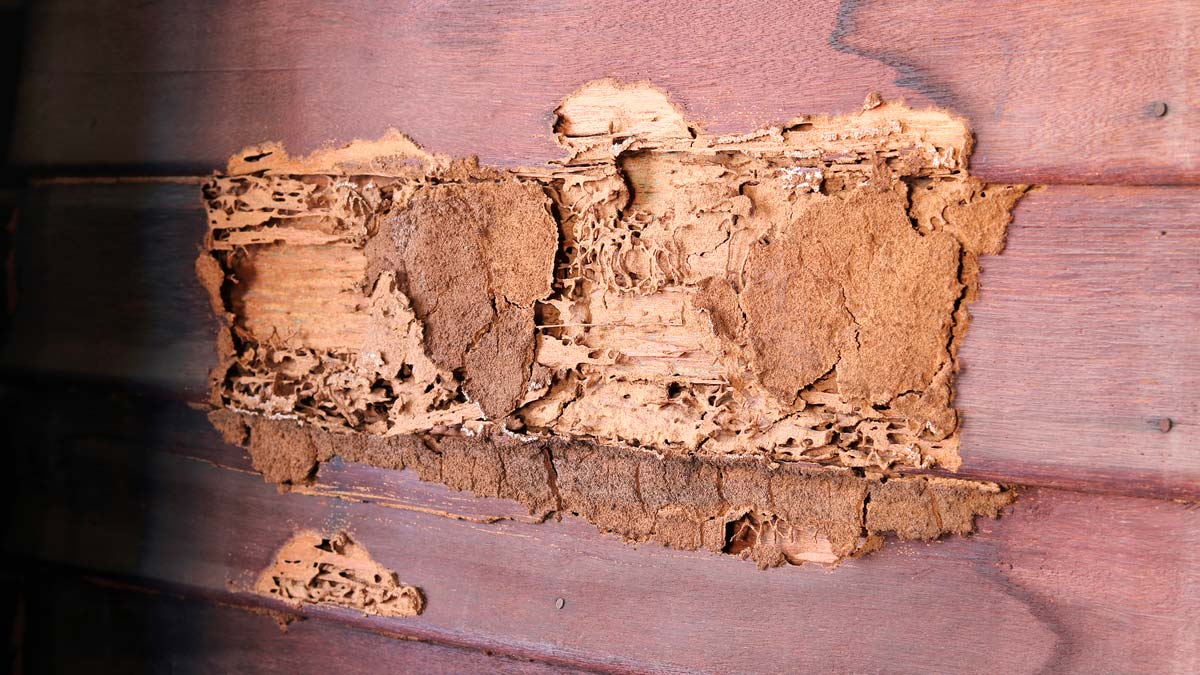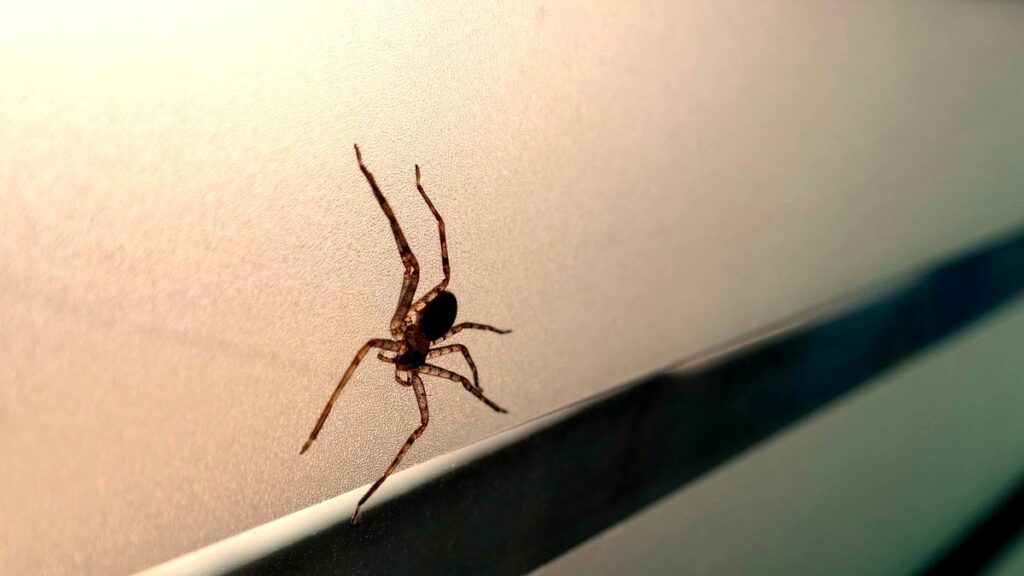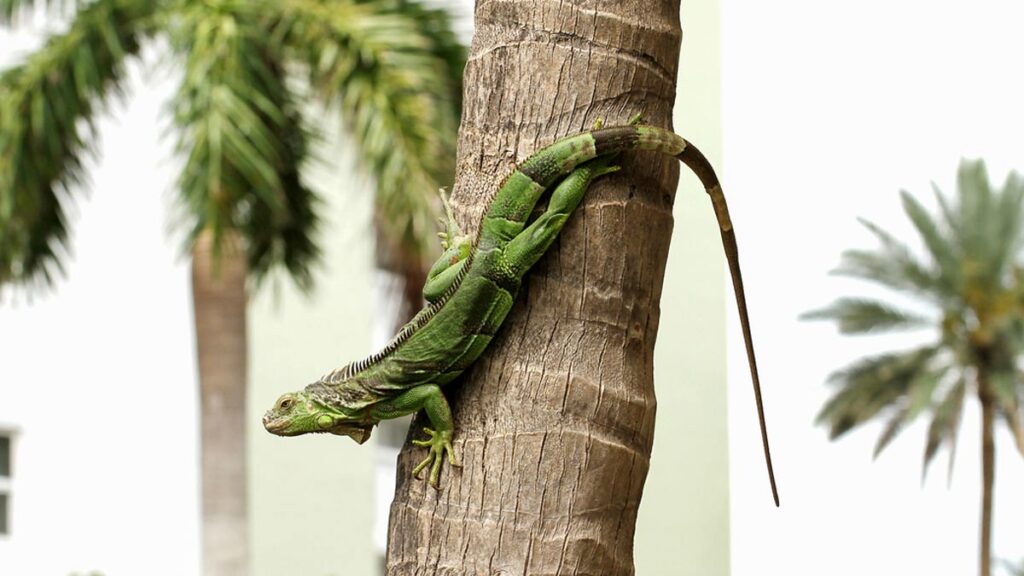
Termites Detection, Prevention, and Elimination
Defending Your Florida Home
Updated on: January 2024

Termites in Florida pose a significant threat to the structural integrity of homes due to the state’s warm and humid climate, which provides an ideal environment for these pests to thrive. As homeowners in the Sunshine State, it’s crucial to remain vigilant and proactive in dealing with termite infestations. Detecting early signs of termite presence can save you from substantial damage repair costs in the long run.
When it comes to termite detection, there are a few key indicators to watch for. Visible damage to wooden structures, such as hollowed-out wood and blistered paint, can be telltale signs of termite activity. Keep an eye out for termite swarmers—winged insects that emerge from colonies to establish new nests. These swarmers are often mistaken for flying ants, but their straight antennae and uniform wings distinguish them.
Prevention is equally important, and there are several steps you can take to safeguard your Florida home. Regular inspections by trained professionals can help detect early infestations and potential vulnerabilities. Additionally, maintaining proper drainage and eliminating sources of excess moisture can deter termites, as they are drawn to damp environments. Soil treatments, like using termiticide barriers, can act as a deterrent when applied around the foundation of your home.
Should you find yourself dealing with a termite infestation, seeking professional assistance is recommended. Established companies like Terminix and Orkin offer comprehensive termite treatment plans tailored to Florida’s unique conditions. Costs for professional termite treatment can vary based on factors such as the size of your home and the severity of the infestation, but typically range from $1,000 to $3,000 or more. Remember that investing in effective termite control now can save you from substantial repair expenses down the line.
Find What You Need
Understanding Termites in Florida
Florida has two primary types of termites that flourish in its hot humid climate. It is important to understand the different types of termites and their impacts on your home.
Subterranean Termites
Subterranean termites are a common menace in Florida homes. These termites build their nests underground and create mud tubes to access their food source—wood. The humid climate of Florida provides the necessary moisture for subterranean termites to thrive. These pests can quickly cause substantial damage by targeting the wooden structures of homes and buildings.
Drywood Termites
Drywood termites, as the name suggests, infest dry wood within the home. Unlike subterranean termites, they do not require a direct connection to the soil. Instead, they establish colonies within the wooden materials they infest. Drywood termites are particularly challenging to detect, as they do not build mud tubes and their infestations can remain hidden for long periods, leading to significant damage over time.
Impact of Florida’s Climate on Termite Infestations
Florida’s warm and humid climate creates a perfect environment for termites to flourish:
Warm and Humid Conditions
The year-round warmth and high humidity in Florida provide optimal conditions for termites to thrive. These pests are active throughout the year, unlike in colder regions. The humid climate not only supports termite reproduction but also enables them to consume wood efficiently, leading to quicker infestations and potential structural damage.
The Takeaway
Protecting your Florida home from termite infestations requires proactive prevention, early detection, and the assistance of professionals to ensure a safe and structurally sound living environment.
Signs of Termite Infestations
Recognizing the signs of a termite infestation is crucial for early detection and effective treatment:
Visible Damage
Termite damage often presents as hollowed-out or weakened wood. Wooden structures may appear damaged or compromised, with sagging floors, walls, or ceilings. Blistering or peeling paint on wood surfaces can also indicate termite activity underneath.
Swarmers and Discarded Wings
Termite swarmers, also known as alates, are winged termites that emerge from mature colonies to establish new nests. They are attracted to light and may swarm around windows and light fixtures. Finding discarded wings around window sills or other areas indicates the presence of termite swarmers, a clear sign of an active infestation.
Understanding these aspects of termite behavior and the impact of Florida’s climate on their activities is vital for homeowners to effectively combat infestations and protect their properties.
Risks and Damage from Termites in Florida Homes
Termite infestations pose unique and concerning concerns to your home and your health.
Potential Risks of Termite Infestations
Termite infestations in Florida homes pose several significant risks that homeowners should be aware of:
Structural Damage
One of the most concerning risks associated with termite infestations is the potential for severe structural damage. Termites feed on wood, weakening the structural integrity of wooden components in homes. Over time, this can lead to compromised supports, walls, floors, and other vital parts of the building. If left untreated, extensive termite damage may even result in costly repairs or, in extreme cases, render the home unsafe for occupancy.
Health Concerns
While termites themselves are not known to directly pose health risks to humans, the presence of termites can create conditions that could lead to health issues. As termites thrive in damp environments, their presence may indicate moisture problems within the home, which can contribute to mold growth and other allergens. Additionally, the structural damage caused by termites can create potential safety hazards that could lead to accidents or injuries.
Examples of Termite Damage in Florida Homes
Florida homeowners have experienced a range of termite-related damages that highlight the risks:
Collapsed Structures – In severe cases, termite damage can compromise the structural integrity of a home, leading to collapses of ceilings, floors, or even entire sections of a building.
Weakened Foundations – Termites often target wooden supports and beams, weakening the foundation of the home and posing a serious threat to its stability.
Hidden Damage – Drywood termites, which infest wooden materials within the home, can cause hidden damage that goes unnoticed for years. This can lead to extensive repairs being needed once the infestation is finally discovered.
Understanding the potential consequences of termite infestations in Florida homes emphasizes the importance of swift and effective action to detect, prevent, and eliminate these pests before they cause irreversible damage.
Prevention and Maintenance Strategies
Prevention strategies like soil treatment and proper landscaping, and maintenance strategies like inspections, will discourage the presence of pests in your home.
Preventive Steps for Termite Infestations
Taking proactive measures is key to minimizing the risk of termite infestations in your Florida home:
Soil Treatment
Implementing soil treatments involves applying termiticides around the foundation of your home to create a barrier against subterranean termites. This acts as a deterrent, preventing termites from entering your home from the ground. Regular reapplication may be necessary to maintain its effectiveness.
Proper Landscaping
Designing your landscaping with termite prevention in mind can significantly reduce the risk of infestations. Maintain a clear gap between soil or mulch and wooden structures. Avoid planting dense vegetation against the home’s exterior, as it can provide a hidden entry point for termites.
Role of Moisture Control in Termite Prevention
Termites are attracted to moisture, so managing moisture levels around your home can discourage their presence. You can do this by:
- Keeping gutters clean and directing water away from the foundation prevents excess moisture buildup.
- Repairing leaks promptly, such as plumbing or roof leaks, helps prevent damp environments that termites thrive in.
- Installing proper ventilation in crawl spaces and attics aids in maintaining dry conditions.
Regular Termite Inspections
Scheduled termite inspections by trained professionals are essential for early detection. Make sure to engage with a licensed termite inspector to conduct annual inspections. These inspectors will identify signs of termite activity, even if it’s not yet visible to homeowners. It’s important to remember that early detection allows for timely intervention and reduces the risk of extensive damage.
Ongoing Maintenance to Prevent Reinfestations
Once you’ve addressed a termite infestation, ongoing maintenance is crucial. This maintenance includes sealing cracks and gaps in the home’s foundation, walls, and roof to prevent easy access; regularly monitoring wooden components for any signs of termite activity; and installing physical barriers like stainless steel mesh to protect vulnerable areas. Taking these preventive and maintenance measures helps create an environment that is less attractive to termites and significantly reduces the likelihood of future infestations.
DIY and Professional Termite Control
When dealing with termites in your Florida home, you have the choice between DIY methods and seeking professional assistance.
Comparison of DIY Methods and Professional Options
While DIY methods might seem cost-effective initially, they often lack the expertise and comprehensive approach of professionals. Professionals have the training and experience to accurately assess the extent of an infestation and choose the most appropriate treatment. DIY treatments might provide temporary relief but may not address the underlying issue, leading to reinfestations.
Liquid vs. Bait Termite Treatments
Two common methods of termite control are liquid treatments and bait systems:
Liquid Treatments
These involve applying liquid termiticides around the foundation of your home. The goal is to create a barrier that termites cannot pass through. Liquid treatments offer immediate protection but may require regular reapplication.
Bait Systems
Bait stations are placed in the ground around your home. Termites consume the bait and carry it back to the colony, which eventually leads to colony elimination. Bait systems can be effective in addressing the entire termite population.
Eco-Friendly Solutions for Termite Control
For environmentally conscious homeowners, eco-friendly termite control options are available:
Orange Oil – Derived from orange peels, orange oil contains compounds toxic to termites and can be used as a localized treatment.
Beneficial Nematodes – Microscopic organisms that feed on termites and can be introduced to the soil around your home.
Boric Acid – A natural substance that can be applied to wood or soil to deter termites.
Use of Nematodes as Biological Control
Nematodes are tiny worms that can serve as a biological control method against termites. These beneficial organisms enter termite bodies and release bacteria that are lethal to termites. Nematodes can be applied to soil around the home, targeting termite colonies. Biological control methods like nematodes offer a less toxic and more environmentally friendly approach to termite management.
Choosing between DIY and professional approaches, as well as selecting the right treatment method, depends on the severity of the infestation, your budget, and your preferences regarding environmental impact. Consulting with experts can help you make an informed decision for effective termite control in your Florida home.
Detecting and Addressing Termite Infestations
Understanding termite swarming seasons is crucial for early detection.
Termite Swarming Seasons in Florida
In Florida, subterranean termites typically swarm during the spring and early summer, often after a rain. Drywood termites, however, can swarm throughout the year but are more common in warmer months. Swarming termites are reproductive members of the colony seeking new locations to establish nests.
Identifying Termite Swarms and Signs of Infestation
Identifying termite swarms and signs of infestation is essential:
Termite Swarmers – These are winged termites that emerge in large numbers and are attracted to light sources. Their presence indoors is a strong indicator of a nearby infestation.
Mud Tubes – Subterranean termites construct mud tubes along surfaces to maintain moisture and provide safe passage between their nests and food sources.
Visible Damage – Hollowed-out or weakened wood, sagging floors, and blistered paint are visible signs of termite activity.
Steps to Take if Suspecting a Termite Infestation
If you suspect a termite infestation, taking swift action is vital:
Contact a Professional – Seek assistance from a licensed termite inspector to confirm the presence of termites and assess the extent of the infestation.
Avoid Disturbing the Area – Disturbing a suspected infestation can cause termites to retreat, making it harder to detect the extent of the problem.
Consider Treatment Options – Based on the inspection results, discuss treatment options with the professional. Treatment plans may involve localized treatments, tenting, or other approaches depending on the severity of the infestation.
Being aware of termite swarming patterns and recognizing signs of infestation empowers homeowners to take timely action. Engaging professionals can provide accurate assessments and effective solutions for addressing termite issues in your Florida home.
Professional Assistance and Costs
Given the potential expenses associated with repairing termite damage, opting for professional termite control and exploring insurance choices can offer reassurance and safeguard your Florida residence financially.
Finding Reputable Termite Control Professionals
When seeking professional assistance for termite control, consider the following:
Research – Look for established and reputable companies with a track record of successful termite control in Florida.
Licensing and Certifications – Ensure the company and its technicians are licensed and certified for pest control services in the state.
Reviews and Recommendations – Read online reviews and seek recommendations from friends or neighbors who have dealt with termite issues.
Consultation – Schedule consultations with multiple companies to discuss their approach, treatment options, and cost estimates.
Average Costs of Professional Termite Treatment
The costs of professional termite treatment can vary based on factors such as the size of the infestation, the type of treatment required, and the size of your home:
Liquid Treatments – Liquid treatments can cost anywhere from $1,000 to $3,000 or more, depending on the size of the home and the scope of the treatment.
Bait Systems – Installing bait systems may incur an initial cost of $1,000 to $2,500, with ongoing maintenance expenses.
Localized Treatments – For smaller infestations, localized treatments can range from $250 to $500.
Full Tenting – For severe infestations requiring full home tenting, costs can exceed $3,000.
Insurance Options for Termite Damage Coverage
Unfortunately, standard homeowners’ insurance typically does not cover termite damage, as infestations are considered preventable and gradual. However, some insurers offer separate termite damage protection policies:
Termite Bond – A termite bond is a contract between the homeowner and a pest control company. It provides coverage for future termite treatments and potential damage repairs.
Annual Renewal – Termite bonds require annual renewal fees, usually ranging from $300 to $700, depending on the coverage and the company.
Coverage Limitations – It’s important to understand the terms and conditions of the termite bond, including coverage limits and exclusions.
Considering the potential costs of termite damage repairs, investing in professional termite control and seeking insurance options can provide peace of mind and financial protection for your Florida home.
Conclusion
In the battle against termites in your Florida home, knowledge and action are your strongest allies. As we’ve explored throughout this guide, understanding the types of termites, the impact of Florida’s climate and the signs of infestation are essential for effective prevention and control. Regular inspections by professionals are your first line of defense. Next, implement preventive steps such as soil treatments, proper landscaping, and moisture control to significantly reduce the risk of infestations. Remember, that when dealing with termite infestations, consulting licensed professionals ensures accurate assessments and tailored solutions. We emphasize the importance of proactive prevention and early detection. By applying the insights and strategies shared in this guide, you can fortify your Florida home against termite threats and enjoy a safe and termite-free living environment for years to come. Remember, a little investment in prevention today can save you from extensive costs tomorrow.





